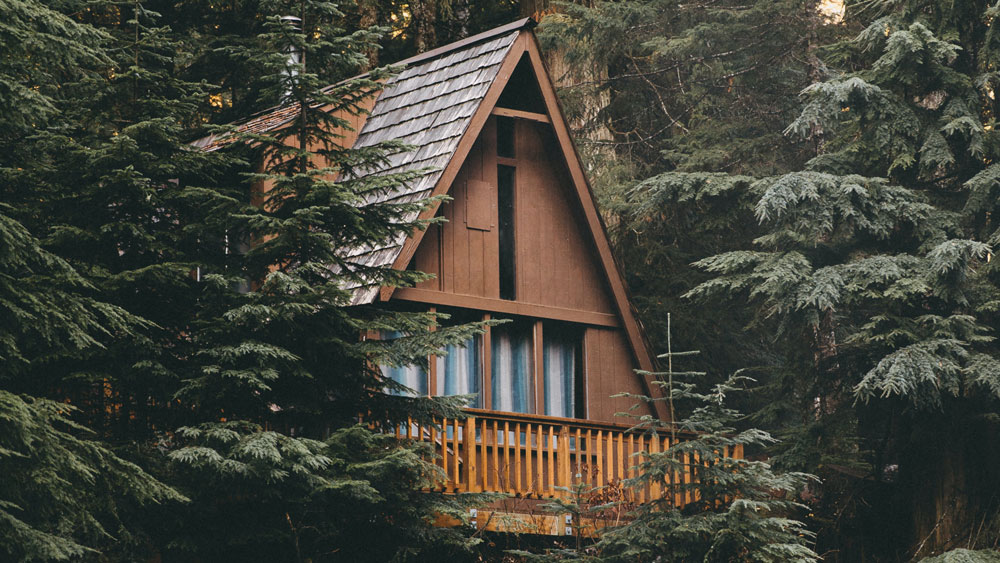
Written by: Trent Jacobs
Planning some maintenance or renovating your vacation home soon? While you’re at it, there are many opportunities for you to improve your cabin’s energy efficiency.
Think of energy performance retrofitting as a spectrum of possibilities: from quick and simple fixture change-outs to significant investments in your cabin’s structure. A range of price tags is possible, depending on your improvement strategy, so it’s important to consider the extent of your remodel and what all you would like to accomplish within your budget.
Quick Fixes
Seal up leaks
Most heating or cooling energy in your cabin is probably lost through air infiltration – where outside air leaks in. Armed with a can of spray foam from your local hardware store, you can seal up the holes where pipes or wiring run through walls, floors and ceilings.
Scare off phantoms
Phantom loads are a growing problem in reducing energy efficiency in many homes. Have you ever wondered why the power button on that new flat screen TV turns from green to red? Me neither … But the fact that a light is still on when we’ve turned an appliance off means that it is still using electricity!
According to the U.S. Department of Energy, phantom loads (from TVs to garage door openers) can make up 5 to 15 percent of a home’s electricity use. And this percentage appears to be on the rise with the addition of many new techno-gadgets available each year. For a quick fix, put all of your non-essential electronics on a surge-protector, and switch it off when nobody’s at your cabin.
See also 10 Simple Ways to Cut Energy Costs
Middle Ground
Replace doors & windows
Doors and windows are usually the least energy-efficient part of a building’s exterior. Double-paned, low-E (low-emissivity) windows and doors are a huge improvement over old single-paned windows.
New window technologies have made even greater improvements in efficiency through the use of a suspended film between glass panes and even triple-paned windows with special gasses between the layers to prevent heat transfer.
There are trade-offs, however, since some types of improved window insulation can cause a slight reduction in natural light. So when you’re window shopping, balance your needs by asking your salesperson about both the window’s heat performance and quality of views so you can take these factors into account while weighing your budget.
Insulate
Replacing poorly performing windows is great, but, without adequate floor, wall and roof insulation, you may not see the energy efficiency improvement you were hoping for.
Roof or attic insulation is often the most important location for insulation. If you’re replacing roof insulation, the best strategy is to create an insulation sandwich, with a layer of spray-foam just under the roof deck and fiber insulation below that.
If you’re just re-roofing, you can add sheets of nail-base below your new roofing. Nail-base is composed of rigid insulation glued to a composite wood board. It adds a continuous layer of insulation and breaks the line of heat conduction between the indoors and outdoors.
Not only is nail-base great for retrofitting a roof, it can also be added to exterior walls during re-siding. For an interior-only remodel, exterior insulation can be improved through creating strapped walls. This means 2x2-inch wood straps are added horizontally across the existing, interior side of the stud framing to create a thicker wall cavity to add more insulation.
Improving the insulation in your cottage or cabin will instantly reduce your heating or cooling needs.
Switch to a heat pump
Compact and incredibly economical heat pump units are now available in the U.S. for heating or air-conditioning in most any climate. A heat pump is an all-in-one cooling and heating system. In the summer, it works like an air conditioner by extracting heat from inside your home and transferring it to the outdoor air. When the weather's cooler, it takes heat from outside and brings it in. The best feature of heat pumps is they are ductless, so they are much easier to install. This makes heat-pumps perfect for retrofitting existing buildings.
See also Why Your Cabin Needs an Energy Audit
Going for the Gold
Use alternative energy
Perhaps the most exciting reason to improve the energy efficiency of your cabin is the potential for using alternative energy, like the sun or wind, to power your place. At this time, solar and wind power technologies are still expensive for large-scale systems, but if you have minimal energy needs at your cottage, minimal power systems are more affordable.
If your cabin, cottage or lakehome happens to be a seasonal or weekend getaway, another great opportunity is to turn it into a full-fledged power plant when you’re away. Net-metering is a process by which homeowners link their solar panels or wind-power to the local electric utility grid to sell the extra electricity they produce when they’re not using it. This arrangement also has the added benefit of allowing you access to additional power should you need it.
So, whether you want your cabin to achieve a certification like LEED Gold, or you just want to save money on your energy bills in the next few years, there are many opportunities big and small to improve energy efficiency through remodeling and retrofitting.










